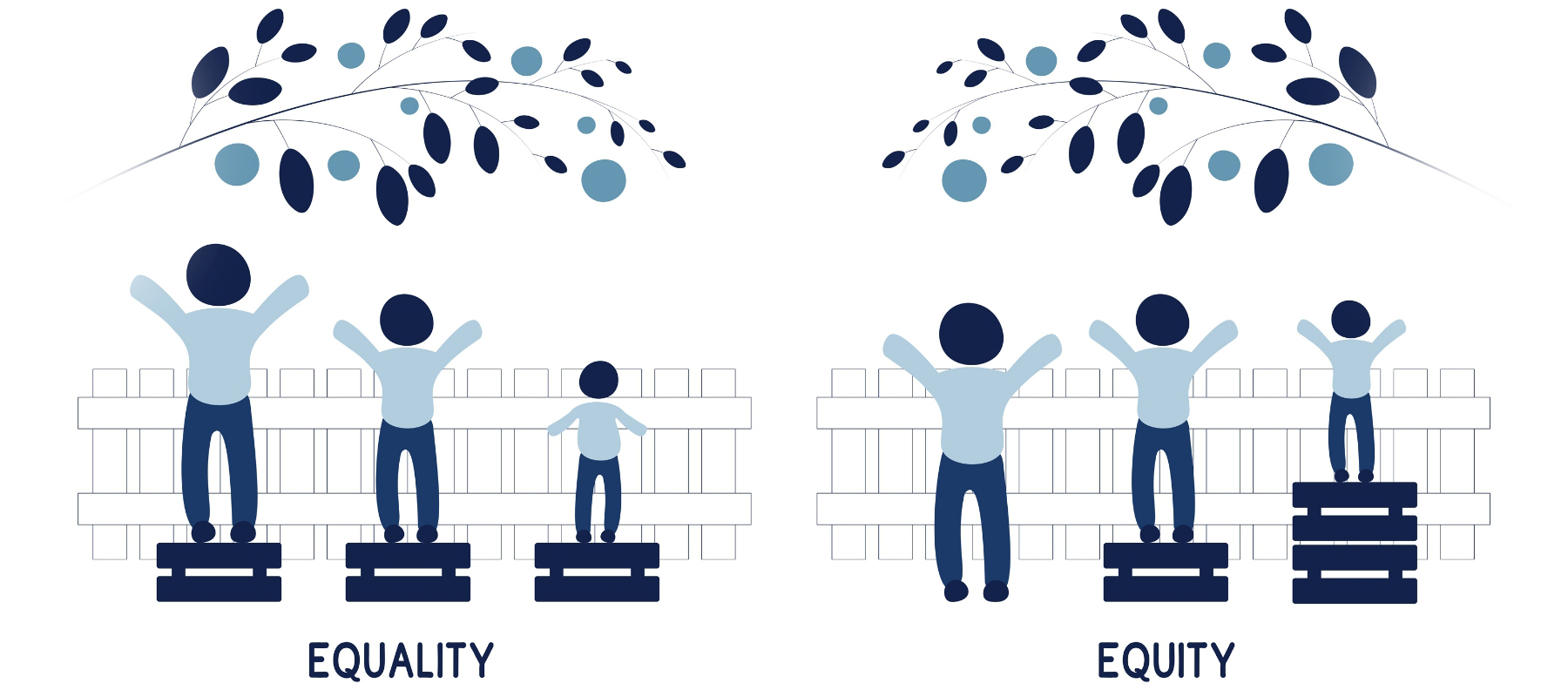As more and more offices and universities permanently adopt hybrid models — a blend of in-person and remote working and learning — several terms have gained traction recently, among them, “equal pixel real estate,” “intelligent video,” and “meeting equity.”
That last term is especially impactful. “When we’ve spoken in the past about ‘meeting equity,’ the phrase has often been interchangeable with ‘meeting equality’ — but that’s not really the case,” says Crestron’s Director of Product Marketing Lauren Simmen. There’s a fairly big difference between equality and equity, and it’s well summarized in the illustration below.

To put it verbally, see this article’s definition:
So how does one meet everyone’s specific needs in a hybrid meeting space?
The AI Video Answer
Defining the problems inherent in a standard videoconferencing setup is step one. “The key to a great remote meeting experience starts in the room where the in-person attendees are seated, believe it or not,” says Simmen. “We’ve all seen remote workers disengage from a meeting because they don’t feel connected to the entire conversation,” she adds. When a remote worker’s presented with what’s best described as a “view down a bowling alley” with a single camera perched at one end of a conference table, that disengagement is bound to occur. “When you’re remote, it can be really difficult to see everyone at that table, to read body language, to see those non-verbal cues that are so important — those very things help you understand when it’s the right time for you to offer an interjection,” Simmen explains.
Another challenge? The natural movement of attendees when they’re speaking to one another. “If I’m in a conference room and a camera’s on my right, the moment I speak to the person on my left, the remote viewer sees the back of my head,” says Simmen. Not only is audio quality likely diminished, but the speaker’s facial expressions are completely hidden from sight for the virtual attendee.
To overcome these issues, a multi-camera, automated switching system — literally, an AI program that follows who’s speaking at a given moment and “cuts” to that individual — can have a profound impact. This technology tracks a speaker’s voice and automatically frames that individual on a screen, giving the remote worker a look that’s not dissimilar from the layout one finds when every attendee is virtual. It’s quite literally a close-up of the speakers, revealing all those critical nonverbal clues and providing the best available audio in that hybrid situation.
One of the pioneers of that technology is now with Crestron: Rony Sebok. Right before she joined the company, she gave Crestron’s Neil Fluester an elegant demo for his CresTV podcast:
The other half of the equation, however, is the viewpoint of the in-person attendees when they’re interacting with remote workers or learners. “If a remote worker’s not in your peripheral vision, you’ll tend to overlook them when you’re attending a meeting or class in-person,” says Simmen. A room with multiple displays, synced together to keep everyone engaged, is another piece of the ecosystem that ultimately drives equity for all.
The Sightline Solution
There’s another advantage of the AI that’s at work here: “intercutting” between speakers — as opposed to a single camera panning back and forth — is part of a visual language we all understand. When two characters in a film are having a dialog, or two anchors at a news desk are taking turns delivering stories, a cut from talking head to talking head appears completely natural to the human eye.
The familiarity of that automatic edit, that cut from speaker to speaker, isn’t just a result of years of exposure to film and television — it’s actually an editing technique that mimics our physiology. This Premium Beat blog post has an exercise that demonstrates the phenomenon (emphasis added):
First, find an area of the room away from your monitor or phone to focus on. It could be a mirror, a television, a lunch menu — anything. After reading this sentence, look at the object, hold your focus for a few moments, then come back to the article. Unless you’re superhuman, all of the information between looking from the screen to the other area of the room gets omitted. And we’ll blink often while looking at the two points of focus, just like an edit cut.
The end result of all the aforementioned aspects, these factors that create the most natural-seeming environment for those in a hybrid meeting, is increased engagement and decreased “screen fatigue.” “The goal is to minimize the extra emotional and physical toll it takes on an individual to overcompensate for the unnaturalness of the environment,” says Simmen.
To that end, Simmen, Sebok, and a number of others have collaborated to create the Crestron Sightline Experience. The package — a complete, integrated ecosystem of hybrid meeting technology — that includes every piece of the puzzle. “We’re trying to make everyone completely comfortable, no matter how they’re collaborating or presenting in either the physical or virtual,” says Simmen. “Add to that one-touch control — or even sensor-triggered automation — that readies every aspect of a space for the meeting when it starts,” she continues. “Shades lower, lights come up, screens change from, say, digital signage to a Microsoft Teams or Zoom display.
“There’s nothing to think about except the collaborative task at hand.”
Learn more about the Crestron Sightline Experience.